Ceramics Based on Sodium Rhenanite CaNaPO4, Obtained via Firing of Composite Cement-Salt Stone
Abstract
1. Introduction
2. Materials and Methods
2.1. Initial Reagents and Synthesis
2.2. Preparation of the Sodium Rhenanite Ceramics
2.3. Characterization
2.3.1. XRD
2.3.2. SEM
2.3.3. Thermal Analysis
2.3.4. Determination of Strength Properties
3. Results and Discussion
4. Conclusions
Author Contributions
Funding
Data Availability Statement
Acknowledgments
Conflicts of Interest
References
- Tavoni, M.; Dapporto, M.; Tampieri, A.; Sprio, S. Bioactive calcium phosphate-based composites for bone regeneration. J. Compos. Sci. 2021, 5, 227. [Google Scholar] [CrossRef]
- Makeeva, I.M.; Poliakova, M.A.; Doroshina, V.I.; Sokhova, I.A.; Arakelian, M.G.; Makeeva, M.K. Efficiency of paste and suspension with nano-hydroxyapatite on the sensitivity of teeth with gingival recession. Stomatologiya 2018, 97, 23–27. [Google Scholar] [CrossRef] [PubMed]
- Kanazawa, T. Inorganic Phosphate Materials; Elsevier Science Ltd.: Oxford, UK, 1989; 306p. [Google Scholar]
- Evdokimov, P.V.; Tikhonova, S.A.; Kiseleva, A.K.; Filippov, Y.Y.; Novoseletskaya, E.S.; Efimenko, A.Y.; Putlayev, V.I. Effect of the pore size on the biological activity of β-Ca3(PO4)2-based resorbable macroporous ceramic materials obtained by photopolymerization. Russ. J. Inorg. Chem. 2021, 66, 1609–1615. [Google Scholar] [CrossRef]
- Bohner, M.; Santoni, B.L.G.; Dobelin, N. β-tricalcium phosphate for bone substitution: Synthesis and properties. Acta Biomater. 2020, 113, 23–41. [Google Scholar] [CrossRef] [PubMed]
- Eliaz, N.; Metoki, N. Calcium phosphate bioceramics: A review of their history, structure, properties, coating technologies and biomedical applications. Materials 2017, 10, 334. [Google Scholar] [CrossRef] [PubMed]
- Safronova, T.; Kiselev, A.; Selezneva, I.; Shatalova, T.; Lukina, Y.; Filippov, Y.; Toshev, O.; Tihonova, S.; Antonova, O.; Knotko, A. Bioceramics Based on β-Calcium Pyrophosphate. Materials 2022, 15, 3105. [Google Scholar] [CrossRef]
- Toshev, O.; Safronova, T.; Kaimonov, M.; Shatalova, T.; Klimashina, E.; Lukina, Y.; Malyutin, K.; Sivkov, S. Biocompatibility of ceramic materials in Ca2P2O7–Ca(PO3)2 system obtained via heat treatment of cement-salt stone. Ceramics 2022, 5, 516–532. [Google Scholar] [CrossRef]
- Lee, J.H.; Chang, B.-S.; Jeung, U.-O.; Park, K.-W.; Kim, M.-S.; Lee, C.-K. The first clinical trial of beta-calcium pyrophosphate as a novel bone graft extender in instrumented posterolateral lumbar fusion. Clin. Orthop. Surg. 2011, 3, 238. [Google Scholar] [CrossRef] [PubMed]
- Hoppe, H.A. Synthesis, crystal structure, and vibrational spectra of Ca4P6O19 (Tromelite)? A catena? Hexaphosphate. Z. Anorg. Allg. Chem. 2005, 631, 1272–1276. [Google Scholar] [CrossRef]
- Safronova, T.V.; Mukhin, E.A.; Putlyaev, V.I.; Knotko, A.V.; Evdokimov, P.V.; Shatalova, T.B.; Filippov, Y.Y.; Sidorov, E.A.; Karpushkin, E.A. Amorphous calcium phosphate powder synthesized from calcium acetate and polyphosphoric acid for bioceramics application. Ceram. Int. 2017, 43, 1310–1317. [Google Scholar] [CrossRef]
- Yuan, Y.; Yuan, Q.; Wu, C.; Ding, Z.; Wang, X.; Li, G.; Gu, Z.; Li, L.; Xie, H. Enhanced osteoconductivity and osseointegration in calcium polyphosphate bioceramic scaffold via lithium doping for bone regeneration. ACS Biomater. Sci. Eng. 2019, 5, 5872–5880. [Google Scholar] [CrossRef] [PubMed]
- Evdokimov, P.V.; Putlyaev, V.I.; Ivanov, V.K.; Garshev, A.V.; Shatalova, T.B.; Orlov, N.K.; Klimashina, E.S.; Safronova, T.V. Phase equilibria in the tricalcium phosphate–mixed calcium sodium (potassium) phosphate systems. Russ. J. Inorg. Chem. 2014, 59, 1219–1227. [Google Scholar] [CrossRef]
- Orlov, N.K.; Putlayev, V.I.; Evdokimov, P.V.; Safronova, T.V.; Garshev, A.V.; Milkin, P.A. Composite Bioceramics Engineering Based on Analysis of Phase Equilibria in the Ca3(PO4)2-CaNaPO4-CaKPO4 system. Inorg. Mater. 2019, 55, 516–523. [Google Scholar] [CrossRef]
- Orlov, N.K.; Kiseleva, A.K.; Milkin, P.A.; Evdokimov, P.V.; Putlayev, V.I.; Günster, J. Potentialities of Reaction Sintering in the Fabrication of High-Strength Macroporous Ceramics Based on Substituted Calcium Phosphate. Inorg. Mater. 2020, 56, 1298–1306. [Google Scholar] [CrossRef]
- Orlov, N.; Kiseleva, A.; Milkin, P.; Evdokimov, P.; Putlayev, V.; Günster, J.; Biesuz, M.; Sglavod, V.M.; Tyablikov, A. Sintering of mixed Ca–K–Na phosphates: Spark plasma sintering vs flash-sintering. Open Ceramics 2021, 5, 100072. [Google Scholar] [CrossRef]
- Holland, W.; Rheinberger, V.; Wegner, S.; Frank, M. Needle-like apatite-leucite glass-seramic as a base material for the veneering of metal restorations in dentistry. J. Mater. Sci. Mater. Med. 2000, 11, 11–17. [Google Scholar] [CrossRef] [PubMed]
- Apel, E.; Holland, W.; Rheinberger, V. Bioactive Rhenanite Glass. Ceramic. Patent US No. 7,074,730, 11 July 2006. [Google Scholar]
- Rautaray, H.K.; Dash, R.N.; Mohanty, S.K. Phosphorus supplying power of some thermally promoted reaction products of phosphate rosks. Fertil. Res. 1995, 41, 67–75. [Google Scholar] [CrossRef]
- Suchanek, W.; Yashima, M.; Kakihana, M.; Yoshimura, M. β-Rhenanite (β-NaCaPO4) as weak interphase for hydroxyapatite ceramics. J. Eur. Ceram. Soc. 1989, 18, 1923–1929. [Google Scholar] [CrossRef]
- Ramselaar, M.M.A.; Van Mullem, P.J.; Kalk, W.; Driessens, F.C.M.; Dewijn, J.R.; Stols, A.L.H. In vivo reactions to paniculate rhenanite and particulate hydroxyapatite after implantation in tooth sockets. J. Mater. Sci. Mater. Med. 1993, 4, 311–317. [Google Scholar] [CrossRef]
- Glasser, F.P.; Gunawardane, R.P. Fertilizer Material from Apatite. U.S. Patent No. 4,363,650, 14 December 1982. [Google Scholar]
- Sventskaya, N.V.; Lukina, Y.S.; Larionov, D.S.; Andreev, D.V.; Sivkov, S.P. 3D-matrix based on bioactive glass and calcium phosphates with controllable resorption rate for bone tissue replacement. Glass Ceram. 2017, 73, 342–347. [Google Scholar] [CrossRef]
- ICDD. International Centre for Diffraction Data; Kabekkodu, S., Ed.; PDF-4+ 2010 (Database); ICDD: Newtown Square, PA, USA, 2010; Available online: https://www.icdd.com/pdf-2/ (accessed on 20 February 2022).
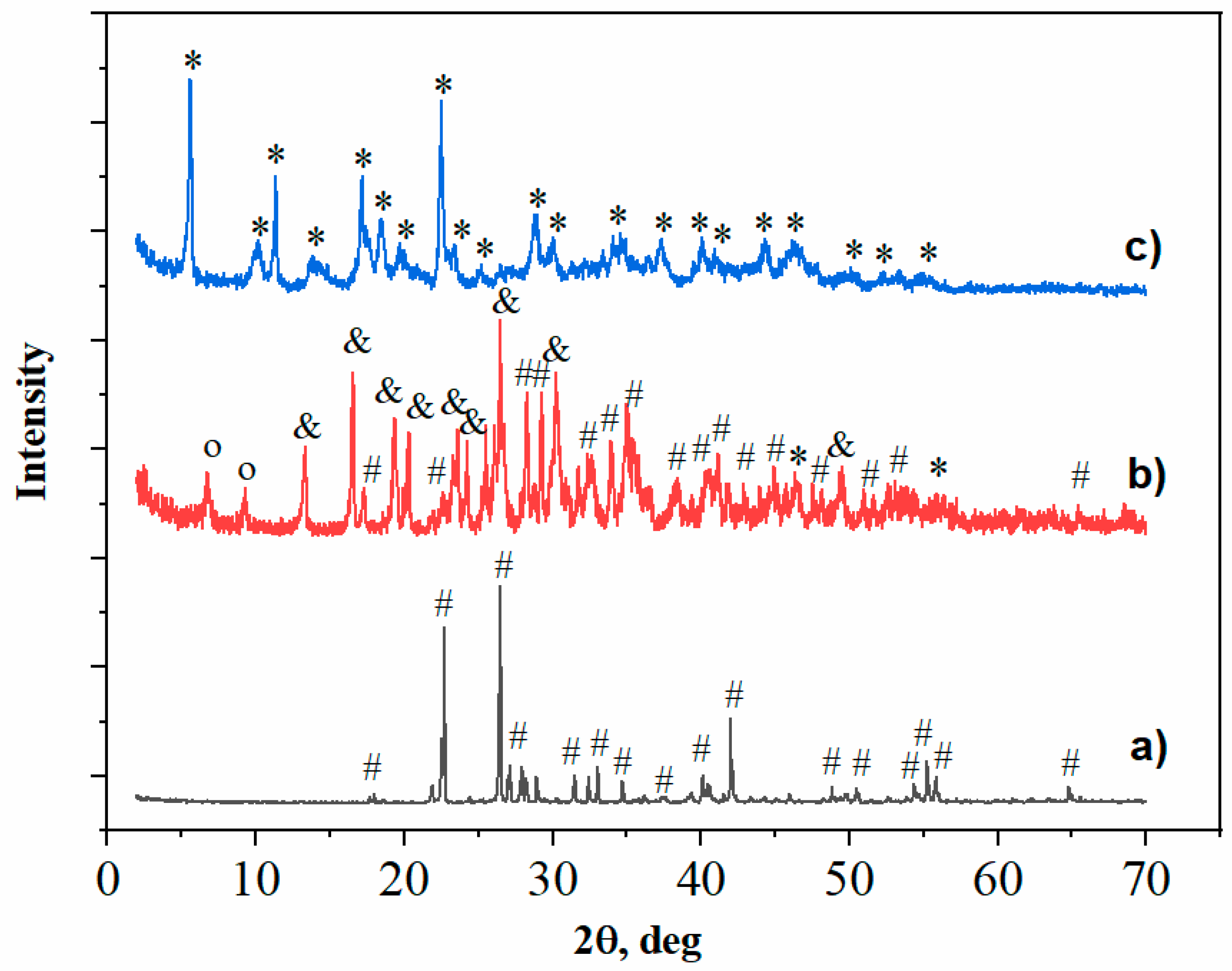
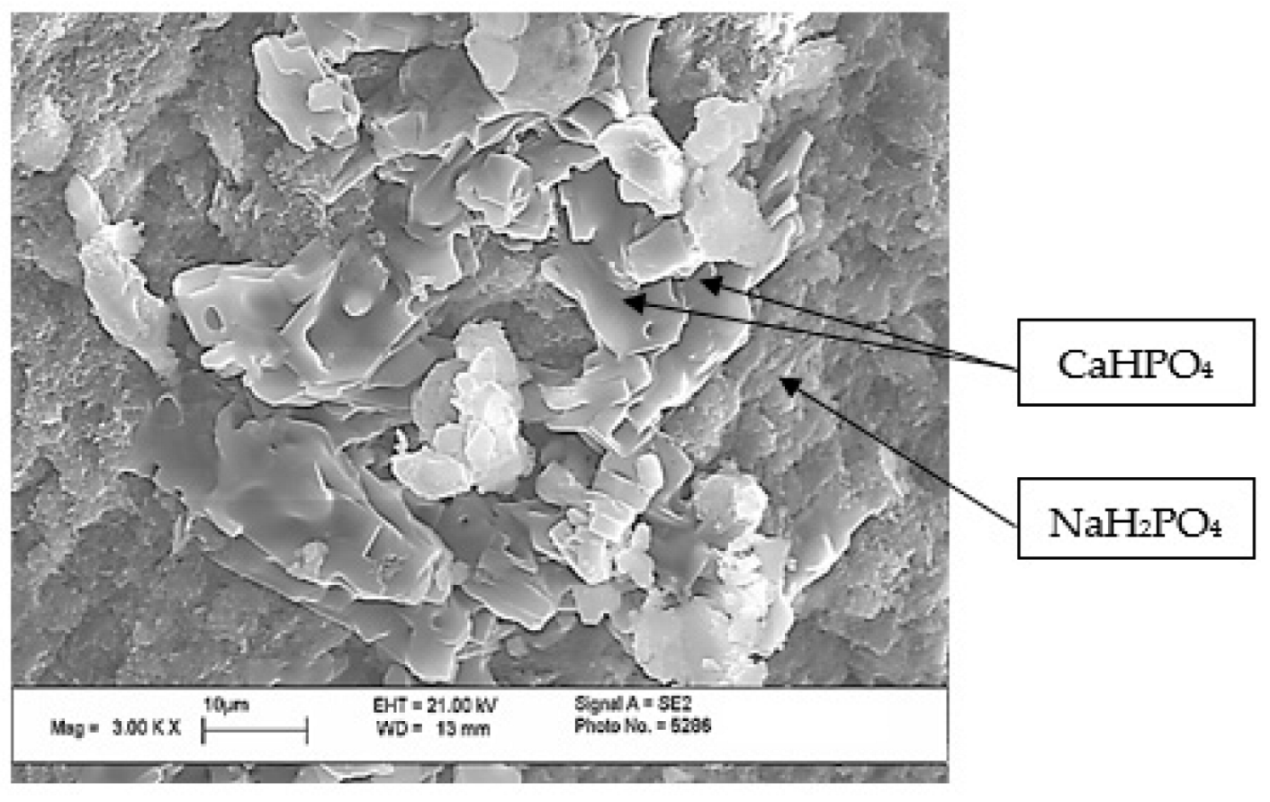
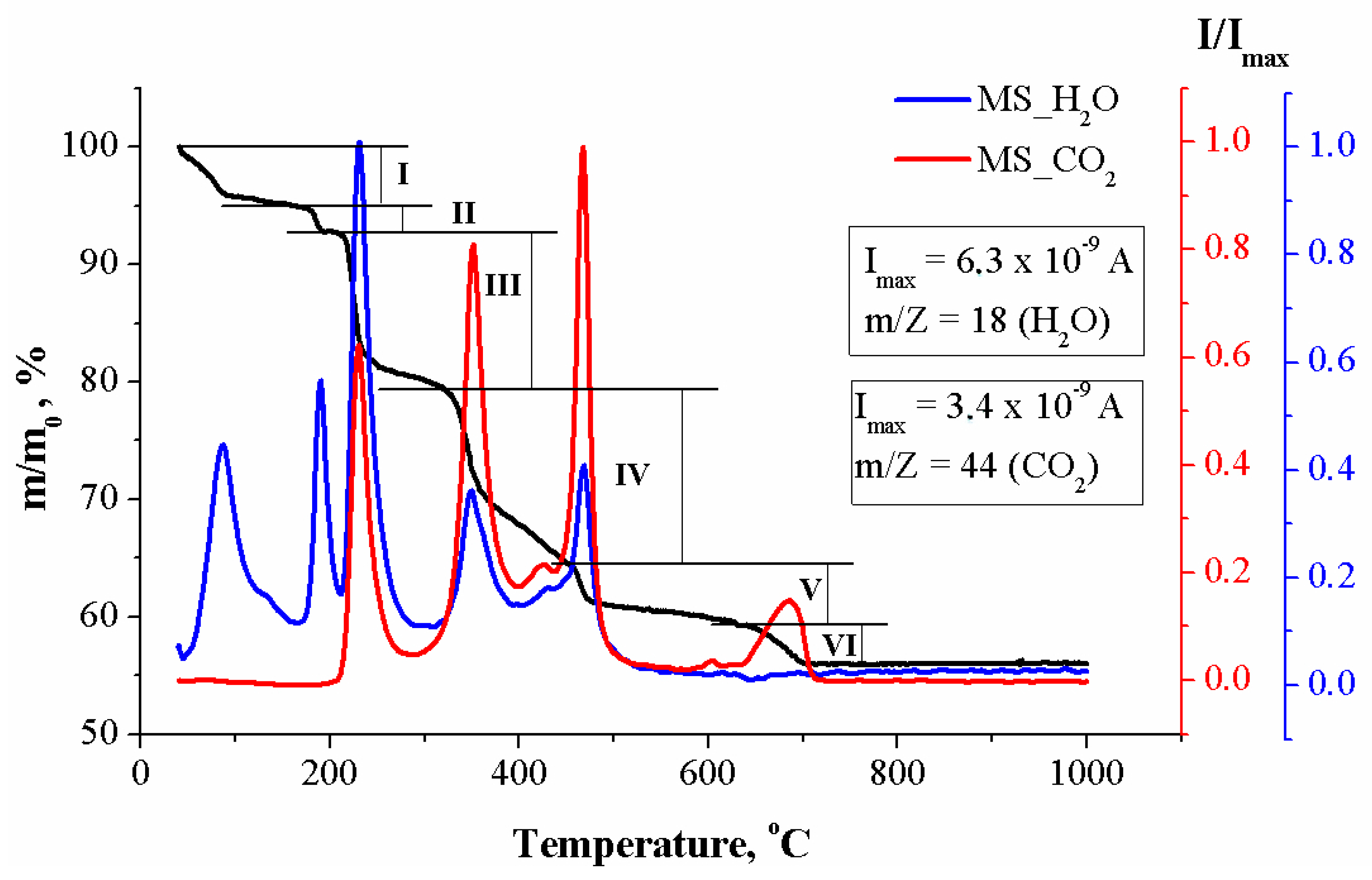
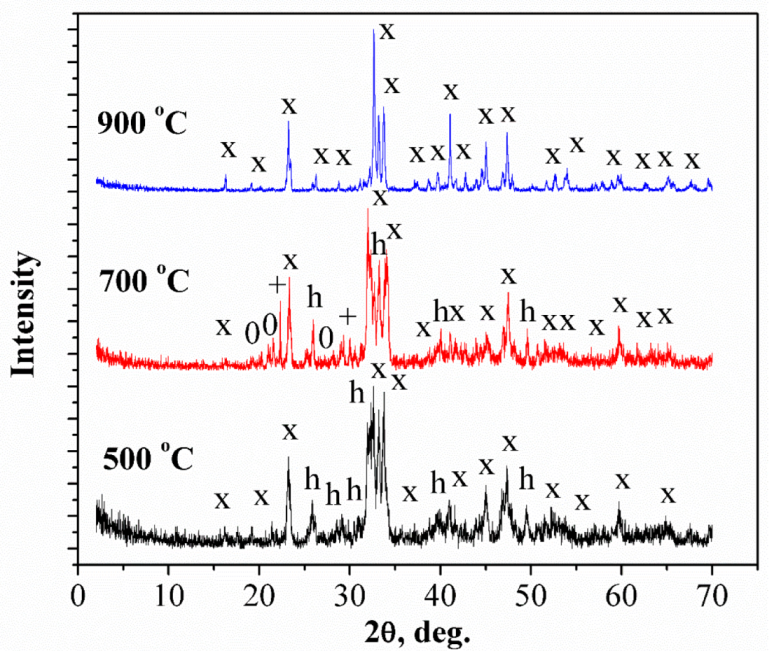
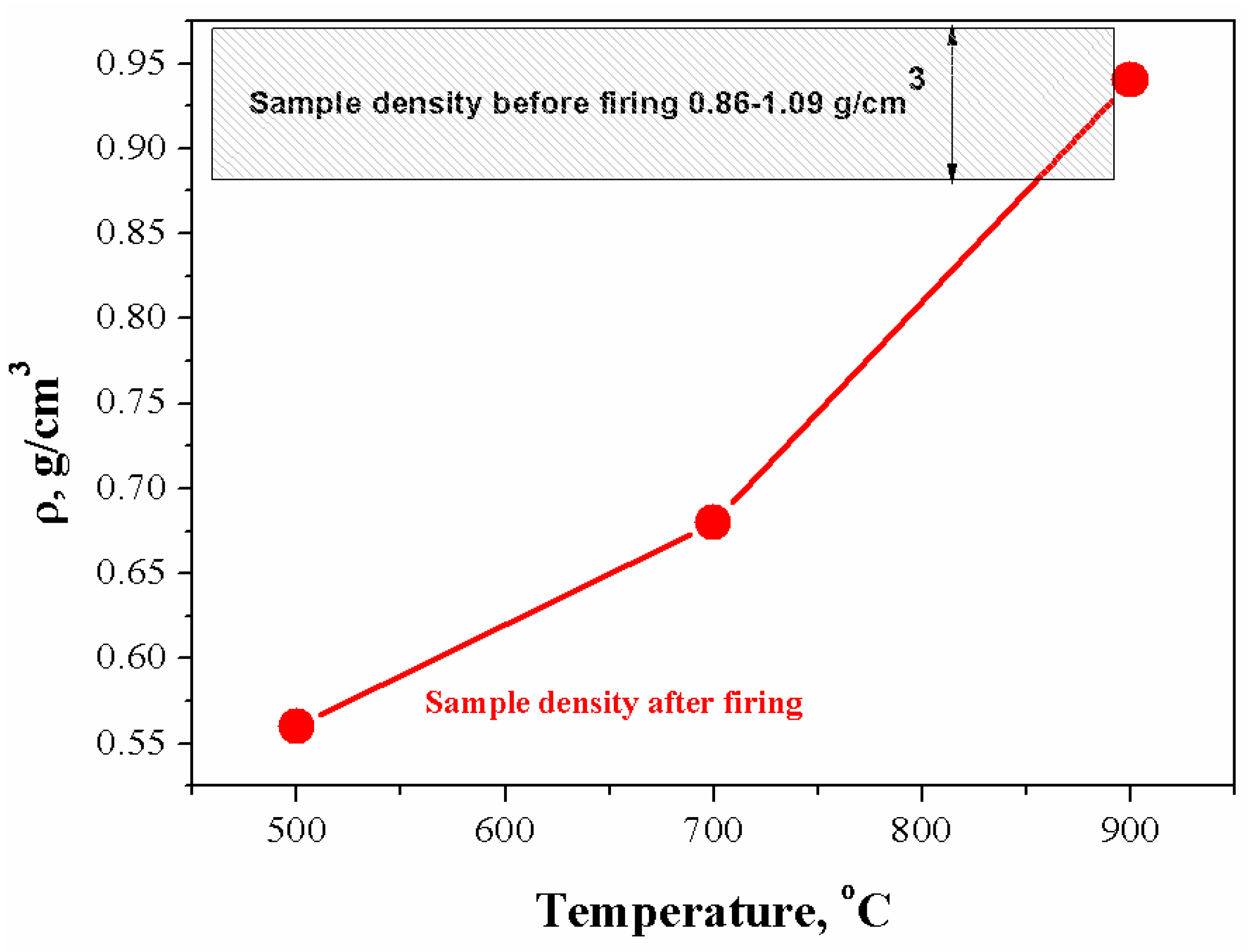

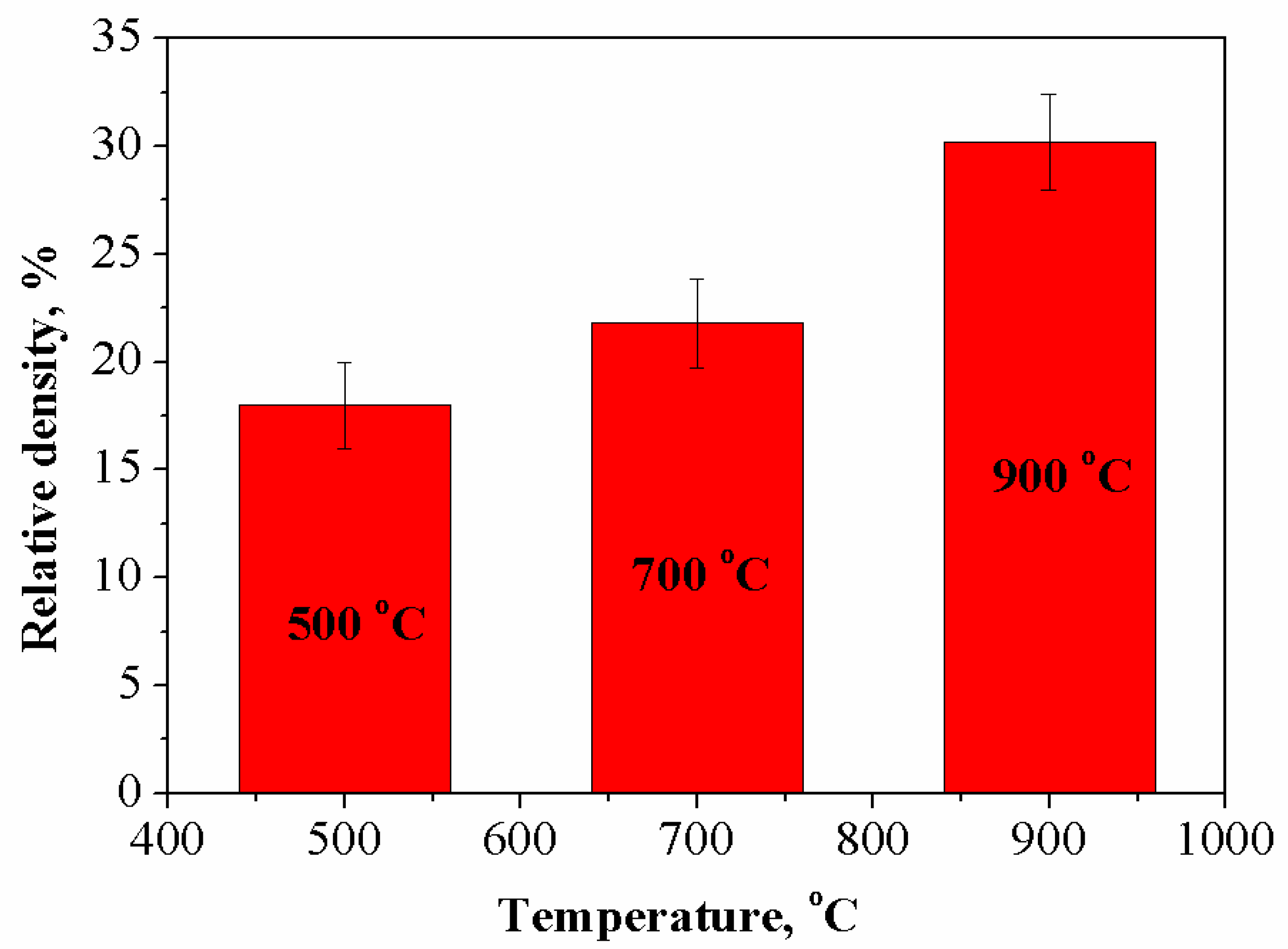


Publisher’s Note: MDPI stays neutral with regard to jurisdictional claims in published maps and institutional affiliations. |
© 2022 by the authors. Licensee MDPI, Basel, Switzerland. This article is an open access article distributed under the terms and conditions of the Creative Commons Attribution (CC BY) license (https://creativecommons.org/licenses/by/4.0/).
Share and Cite
Toshev, O.; Safronova, T.; Kazakova, G.; Shatalova, T.; Boytsova, O.; Lukina, Y.; Sivkov, S. Ceramics Based on Sodium Rhenanite CaNaPO4, Obtained via Firing of Composite Cement-Salt Stone. J. Compos. Sci. 2022, 6, 314. https://doi.org/10.3390/jcs6100314
Toshev O, Safronova T, Kazakova G, Shatalova T, Boytsova O, Lukina Y, Sivkov S. Ceramics Based on Sodium Rhenanite CaNaPO4, Obtained via Firing of Composite Cement-Salt Stone. Journal of Composites Science. 2022; 6(10):314. https://doi.org/10.3390/jcs6100314
Chicago/Turabian StyleToshev, Otabek, Tatiana Safronova, Gilyana Kazakova, Tatiana Shatalova, Olga Boytsova, Yulia Lukina, and Sergey Sivkov. 2022. "Ceramics Based on Sodium Rhenanite CaNaPO4, Obtained via Firing of Composite Cement-Salt Stone" Journal of Composites Science 6, no. 10: 314. https://doi.org/10.3390/jcs6100314
APA StyleToshev, O., Safronova, T., Kazakova, G., Shatalova, T., Boytsova, O., Lukina, Y., & Sivkov, S. (2022). Ceramics Based on Sodium Rhenanite CaNaPO4, Obtained via Firing of Composite Cement-Salt Stone. Journal of Composites Science, 6(10), 314. https://doi.org/10.3390/jcs6100314






